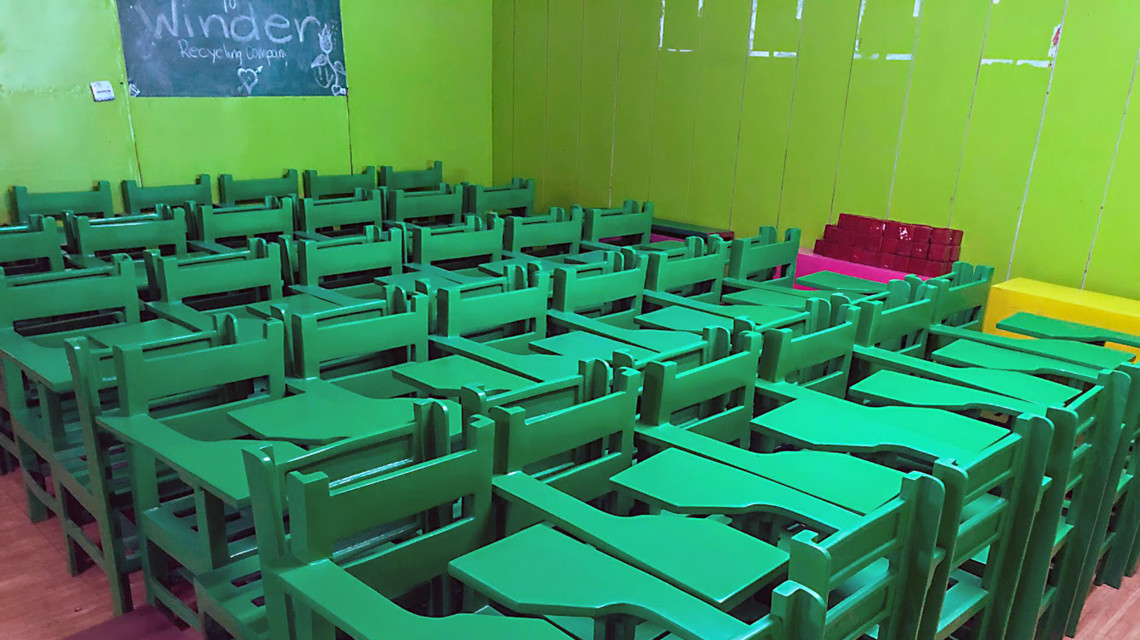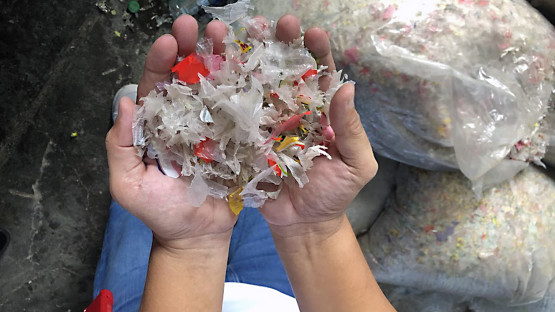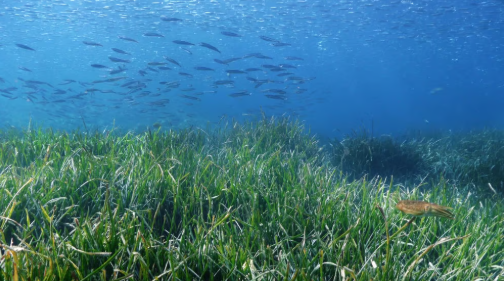The world clearly wants to put an end to plastic pollution, » said Inger Andersen, Executive Director of the United Nations Environment Programme (UNEP), at the closing of the fifth negotiating session to develop an international legally binding instrument on plastic pollution, including in the marine environment, held in Busan (Republic of Korea) in December 2024.
As representatives from over 170 countries and observers from hundreds of organizations prepare for the next session in Geneva (Switzerland), scientists and technical experts are making strides in their research to tackle the global plastic pollution crisis. Recycling and upcycling—the two most viable solutions for plastic waste management—are gaining momentum. Radiation technologies are emerging as an innovative, clean, and efficient tool capable of transforming used plastics and biomass into new products.
The scourge of plastic pollution is not new. Biopolymers like rubber and cellulose were widely used before the advent of synthetic plastics, which began with the invention of Bakelite, the first fully synthetic plastic, created in 1907 by Belgian chemist Leo Baekeland.
In the mid-20th century, around 2 million tonnes of plastic were produced annually. Today, that figure exceeds 400 million tonnes, meaning that avoiding contact with some form of plastic in our daily lives is virtually impossible. At the current pace, global production of virgin plastic is projected to nearly triple, reaching 1,100 million tonnes by 2050.
The Problems with Conventional Recycling
Despite recycling efforts, less than 10 percent of the world’s 7 billion tonnes of plastic waste generated to date has been recycled. Plastic is not biodegradable. Instead of decomposing, it breaks down into smaller pieces, resulting in microplastics. These can be found literally everywhere—from the air we breathe to the oceans surrounding Antarctica.

Mechanical and chemical recycling are the two main techniques currently used for plastic recycling.
Mechanical recycling is the most common method. It involves collecting similar types of plastics to produce raw materials that can be reintroduced into the plastic production cycle. The process consists of several steps: collection, sorting, cleaning, and shredding of the plastic, which is then melted and reprocessed to create new materials.
This recycling technique is relatively low-cost but requires sorting different polymers, which makes it difficult to process multilayer or mixed plastics. Additionally, this process can only be used a maximum of two times, as the quality of the recycled materials degrades with each cycle. Moreover, it is limited to thermoplastics, which can be remelted and reshaped into new products.
In contrast, chemical recycling allows for the treatment of a wider variety of mixed plastic waste, including contaminated and low-quality plastics, by breaking them down to their molecular components. The substances obtained can then be used to produce new plastics or other products, such as fuel. This method is quite costly due to its high energy demands, and establishing large-scale chemical recycling facilities requires heavy infrastructure investments.
How Can Irradiation Help?
When it comes to reducing plastic waste, gamma rays and electron beams offer unique advantages: they enable cleaner recycling and production processes, eliminate the need for potentially harmful additives, and improve energy efficiency.
« The main advantage of irradiation in plastic recycling lies in its ability to alter the chemical structure of plastics at the molecular level, » explains Azillah Binti Othman, Head of Irradiation Processing at the IAEA. « Irradiation can help reduce plastic waste in two ways: by enabling the reuse of hard-to-recycle plastics in the form of valuable products, and by supporting the design of bioplastics to reduce dependence on petroleum-based plastics. »

Irradiation is highly effective for sorting recycled plastic—already washed and shredded—by polymer type.
This technology enhances the purity of recycled plastic and, consequently, its value.
Irradiation can also be used to complement and improve traditional recycling methods. When combined with a chemical recycling method known as pyrolysis, which triggers radiolysis, the polymers in plastic waste can be broken down and converted into fuel or chemical components to create new products—without the need to add virgin (i.e., non-recycled) polymers.

Beyond traditional recycling, irradiation also paves the way for innovative approaches, offering the possibility of mixing plastic waste with other materials to create more durable products.
This approach facilitates the manufacturing of high-performance materials used in sectors such as automotive and construction. For example, in the Philippines, construction materials made from recycled plastic—such as tiles, bricks, lumber, and boards—are irradiated to enhance their mechanical properties, including tensile strength, shear resistance, and abrasion resistance.
Furthermore, radiation-assisted technology is expected to enable the production of more durable finished products from biomass, a renewable resource. This makes it possible to create bioplastics and other high-value compounds, such as new packaging materials that could replace conventional petroleum-based plastics.

NUTEC Plastics: From Recycling to Microplastic Monitoring
As part of the NUTEC Plastics initiative, the IAEA is leveraging the power of radiation technologies to help countries combat plastic pollution. The Agency is acting on two fronts: at the source—using new technologies that can enhance plastic recycling—and in the ocean, where the majority of plastic waste eventually ends up.
“When acting at the source, the main goals are to reduce plastic waste volumes through innovative upcycling techniques, to convert more hard-to-recycle plastics into valuable products, and to design bioplastics,” explains Celina Horak, Head of the IAEA’s Radiochemistry and Radiation Technology Section. “With the support of the NUTEC Plastics initiative, nine countries across Asia, Latin America, and Africa are building pilot facilities using radiation-assisted technology.”
The role of irradiation in tackling plastic pollution will be addressed at the third International Conference on Applications of Radiation Science and Technology, which the IAEA will host in Vienna, Austria, from 7 to 11 April 2025. The #ICARST2025 Conference will bring together hundreds of experts in radiation-related fields—including physics, chemistry, materials science, biology, and engineering—and will be open to the public via live stream.
International events will also be held in October 2025 in the Republic of Korea, featuring presentations of the IAEA’s circular economy and technology readiness level assessment tools, and in November 2025 in the Philippines with the first high-level International Forum on the NUTEC Plastics initiative. Both events will also focus on the second component of NUTEC Plastics: marine environment monitoring—where nuclear science is used to detect, trace, and monitor plastics in the ocean, particularly microplastics.
Source: iaea




